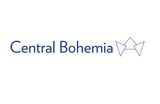Museum in Kacina Chateau
The Chateau built by Earl Jan Rudolf Chotek in 1806–1824 is a unique demonstration of pure Empire style. The extensive wings of the castle include the unique Chotek Library, parlours, a historical pharmacy and contemporary theatre. In the castle garden, which is built in the English natural landscape park style, you will find a greenhouse, a herb garden and an educational tour route.
On several tour routes you can get acquainted not only with the history of the Chotek family or the normal life of the servants, but also with the changes in the noble estates during the 19th century.
Routes at the Kacina château:
The Kingdom of the Bees
It has seen considerable expansion this year. While the first part is dedicated to the dwellings of bees including a live château hive, the new expansion allows access to the inside of a bee house, and offers an interactive game an other audio-visual elements. The exhibition also addresses the issue of the enemies of bees.
Voices of Nature – How Plants and Animals Talk
This route will introduce you to the fascinating world of nature and present less well-known methods of communication of fauna and flora. Here you will discover that animals “talk” through certain stable ways of behaving, which primarily use, besides vocal expressions, body language, or that even plants have developed social and defensive behavior and even a memory.
Faces of Agriculture
In 2018, the Kacina Château celebrated the one-hundredth anniversary of foundation of the National Museum of Agriculture by opening the Faces of Agriculture exhibition, freely scattered around all of the premises for the entire season. An exhibition with a simple and interactive form presents iconic figures in the history of Czech agriculture.
Agricultural Museums of the Successor States to the Hapsburg Monarchy
The year 1918 is commemorated by the panel exhibition Agricultural Museums of the Successor States to the Hapsburg Monarchy, which presents a flood of establishments of agricultural museums in the former Austro-Hungarian Monarchy and gives rise to the foundation of the Czechoslovak Museum of Agriculture in connection with events throughout Europe.
Czech Folk Costumes from the Early 19th Century
In an enlarged format, the exhibited reproductions present 36 colour etchings from the work Folk Costumes of Bohemian Farmers and Farmers’ Wives (Trachten Böhmischer Bauern und Bäuerinnen), which were published in Vienna in 1814 by eminent graphic artists Antonin Pucherna (1776-1852) and Ludvik Arnost, Count of Buquoy (1783-1834).
Historical Confectioners
Bygone times are remembered in the stylised interior of a historical confectionery, shop and manufacturing plant with coffee containers, jars full of sheets and desserts made according to magazines from the 1930s. Here, you will see often forgotten confectionery tools, such as dies and candy moulds, or the moulds of once popular snowballs. You can also admire period boxes of chocolate and advertising materials.
For more information about the Central Bohemia Region, from which this museum comes, click here and here.
This post was created by volunteers. You may help and support by clicking here.



